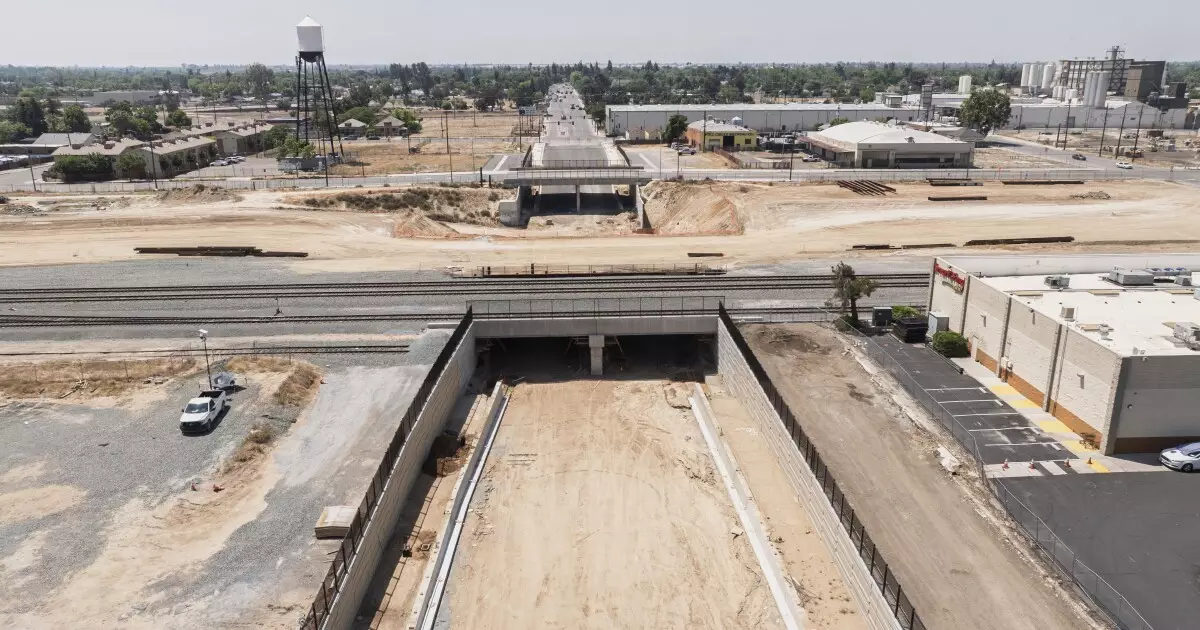As California’s ambitious high-speed rail project trudges forward, the rhetoric surrounding it paints a glowing picture of progress, yet the reality is sobering. Agency leaders, like CEO Ian Choudri of the California High-Speed Rail Authority, herald the project as a transformative venture for the Central Valley. However, with the cost ballooning from an initial estimate of $33 billion to a staggering $128 billion, one has to question whether this investment is truly wise. The agency’s claims of “momentous achievements” resonate with political optimism but sound alarmingly like the echoes of a delusive fairy tale. While proponents may argue that the existing infrastructure improvements have reshaped the region, local residents may feel frustrated seeing funds strangleholded in a massive undertaking that appears ever more unmanageable.
Federal Funding Tug-of-War
The current administration’s threats to pull federal funding add further weight to the project’s already precarious position. The Federal Railroad Administration has flagged serious concerns regarding endless delays and budget overruns. In their recent report, the prospect of default on $4 billion in federal grants looms large. There’s a bitter irony in the fact that this project was initially marketed as a way to modernize California’s transportation network, but instead, it spirals deeper into financial quagmire. The situation is compounded by the Trump administration’s previous rescission of nearly $1 billion in federal aid— a political maneuver that has thrust the future of high-speed rail into uncertainty. Whether justified or not, the idea of terminating these grants now rests as a mighty sword over the project.
The Façade of Public Support
Despite the troubling financial landscape, a recent poll from Politico and the UC Berkeley’s Jack Citrin Center reveals that a significant 67% of registered voters support the continuation of the project. This overwhelming endorsement stands in stark contrast to the mounting evidence of a financial fiasco. Public sentiment can often be swayed by emotional narratives rather than financial realities, and one wonders if voters are fully aware of the project’s ethics. Are they ultimately endorsing a deeply flawed plan simply because it resonates with the idea of progress? Many Californians may want high-speed rail to succeed not because it is fiscally responsible but because it symbolizes modernization. This emotional attachment to a utopian future clouding the necessary financial rigor raises eyebrows among those who hold the purse strings.
Future Partnerships and Financial Innovation
Choudri’s vision of bridging the funding shortfall through state and private investments presents an interesting paradigm shift. Tapping into California’s cap-and-trade program as a source of steady revenue could be seen as innovative, but it suggests a reliance on somewhat patchwork financial strategies rather than a solid, sustainable plan. By engaging private partners through potential public-private partnerships, the hope is to turn financial lemons into lemonade. Although the authority is preparing to issue a Request for Expressions of Interest to gather innovative funding mechanisms, it feels more like grasping at straws than a solid financial strategy. Given the scale of budget overruns, creative financing is warranted, but it shouldn’t be the only course of action.
Assessment of Legislative Support
Legislative moves in the California State Senate to assess future funding mechanisms are also touching upon the issue of sustainability. However, it is crucial to scrutinize whether these measures can truly deliver effective solutions or are merely a way to buy time. Proposals for studies and assessments often gloss over the fatal flaws that underpin high-speed rail projects—a historical pattern seen in multiple large-scale infrastructures. One must ponder about the true intention of such legislative efforts. Are they genuinely trying to salvage a sinking ship, or are they just prolonging the inevitable, with fingers crossed?
What Lies Ahead?
California’s high-speed rail project, once celebrated as the beacon of modern transportation, now stands at the crossroads between ambition and reality. While there may be pockets of success, the overwhelming narratives of financial mismanagement and bureaucratic hurdles keep casting a shadow. The tantalizing vision of a seamless connection between Los Angeles and San Francisco is increasingly at risk of becoming a case study in what happens when political ambitions run amok. The public’s hopes are intertwined with promises of innovation and progress, yet the substance of those promises appears increasingly hollow. In this political climate, the journey towards completion might be fraught with more than just the physical tracks; it fundamentally questions the essence of modern governance and fiscal responsibility.


Leave a Reply